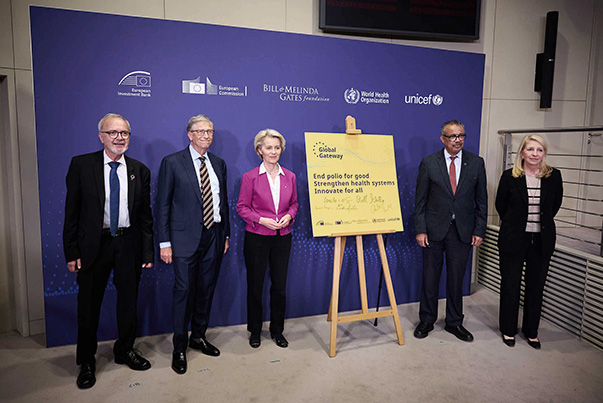
Chapter 7 – Protecting people and freedoms

Introduction
In 2023, as COVID-19’s status as a global health emergency was finally lifted, the final building blocks of the European health union were laid. In future, all European Union Member States will be better prepared to tackle a public health crisis together and better able to protect both the physical and the mental health of their citizens. The EU strengthened its response to the common challenge of migration in terms of legislation – with the political agreement between the European Parliament and the Council on the Pact on Migration and Asylum, along with operational measures – and comprehensive partnerships with non-EU countries.
2023 was also the year that Croatia became the newest member of the Schengen area, and began to enjoy the full benefits of being part of the largest free-movement area in the world. The Council of the European Union also took the landmark decision to welcome Bulgaria and Romania into the Schengen area, starting with lifting controls at air and sea borders as of the end of March 2024. The EU also took comprehensive steps to protect its citizens from threats both inside and outside its borders.

Protecting citizens
The terrorist attacks in a school in France and on the streets of Brussels in October 2023 were a stark reminder of the urgency of continuing to adapt and reinforce the EU’s security architecture. A number of measures were agreed over the course of the year to help combat organised crime, terrorism, trafficking in human beings, drug trafficking and corruption.
The Commission also urged the Member States to take the necessary steps to ensure full compliance with the Regulation addressing the dissemination of terrorist content online - open a new tab., which obliges service providers to remove terrorist content within 1 hour of receiving a removal order from Member State authorities. A set of recommendations - open a new tab. was published in October to coordinate the response of Member States to the spread and amplification of illegal content, such as terrorist content or unlawful hate speech, before it can lead to a serious threat to public security. (See Chapter 5 for more details.)
The EU is committed to stepping up action against all forms of hatred. Following an alarming increase in hate speech and hate crime, targeting the Jewish and Muslim communities in particular, the European Commission, together with the High Representative of the Union for Foreign Affairs and Security Policy, Josep Borrell, launched a call for action - open a new tab. to all Europeans to stand up against hatred and speak up for tolerance and respect. With the joint communication, the EU is reinforcing action across policy areas such as security, digital, education, culture and sport. This includes additional funding to protect places of worship, with envoys appointed to maximise the potential of EU policies to combat hatred.
The Commission also urged the Council to extend the current list of EU crimes set out in the treaties to include hate speech and hate crime, as proposed in 2021 - open a new tab., and reiterated the importance of intensifying the implementation of the 2021–2030 Strategy on Combating Antisemitism and Fostering Jewish Life - open a new tab..
People and businesses in the EU rely on critical infrastructure to deliver essential services. In an increasingly complex security and geopolitical landscape, the EU is taking action to reduce vulnerabilities and increase resilience in this area. The Commission has adopted a list of essential services - open a new tab., linked to critical infrastructure, to be assessed by Member States. The Commission has also proposed a Critical Infrastructure Blueprint - open a new tab. to strengthen coordination at the EU level to respond to significant cross-border incidents.
As part of a package of measures - open a new tab. adopted on the 30th anniversary of EU citizenship - open a new tab., in December, the Commission proposed to amend rules to protect and support EU citizens abroad in times of crisis. The revised Consular Protection Directive - open a new tab. aims to ensure better and easier protection for citizens when travelling outside the EU, if their country of nationality does not have a consulate or embassy where they are.
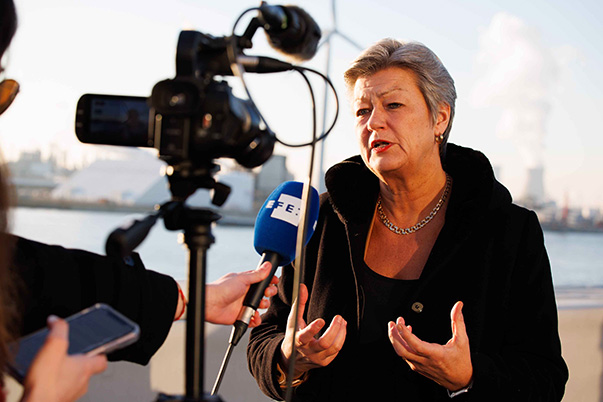
Stepping up the fight against drug trafficking
Drug trafficking is highly lucrative for criminals, as demonstrated by the unprecedented increase in the amount of illicit drugs available in Europe and the fact that drugs seizures in the EU are hitting record levels. The impact of criminal networks engaged in illicit activities is felt throughout communities – and economies – and demands a collective, coordinated response from governments, law enforcement and private actors in key sectors.

The estimated profit of organised crime from illicit activities, including drug trafficking, is around €139 billion a year, which is equivalent to 1 % of the EU’s gross domestic product.

50 % of all homicides in Europe are directly linked to drug trafficking.

70 % of all drug seizures in the EU take place in ports.

40 % of criminal networks active in the EU are involved in trading illegal drugs.

The European cocaine market increased by 416 % between 2011 and 2021.

There were 6 200 deaths from drug overdoses in 2021 in the EU.
Source: European Union Serious and Organised Crime Threat Assessment - PDF file, open a new tab., 2021.
To step up EU efforts to fight organised crime and drug trafficking, the Commission set out a roadmap - open a new tab. in October with 17 targeted actions under four priority areas. The measures build on the ongoing implementation of the 2021–2025 EU Strategy on Organised Crime - open a new tab. and the EU Drugs Strategy - open a new tab..
New EU roadmap to fight drug trafficking and organised crime

Increasing the resilience of ports against drug trafficking and criminal infiltration.

Dismantling high-risk criminal networks by means of more-coordinated investigations and the use of Schengen Information System alerts.

Measures to prevent organised crime through the exchange of best practices among Member States.

Working with international partners, including in West Africa, Latin America and the Caribbean.
In addition, the EU is strengthening the mandate of key actors in the fight against drug trafficking, for example by setting up the new EU Drugs Agency - open a new tab. in 2024. The agency will develop a European drug alert system to quickly notify national authorities of new dangerous substances entering the market. The EU has also increased funding for the European Multidisciplinary Platform against Crime Threats - open a new tab., with significant results - open a new tab.. Furthermore, it continues to invest in innovative solutions for law enforcement agencies to help them keep pace with technological change and maintain their effectiveness in protecting citizens today and in the future.
Corruption constitutes a threat to security, as it enables and drives organised crime, terrorism and other forms of crime, including money laundering and drug trafficking. In 2023, the Commission proposed new legislation - PDF file, open a new tab. to combat corruption and launched an EU network against corruption - open a new tab.. In addition, new rules - open a new tab. on access to financial information, agreed by the European Parliament and the Council in June, will provide law enforcement authorities with quick access to information on the accounts where criminals and terrorists keep or hide their funds or assets.
In the same month, the EU adopted new rules - open a new tab. to make it easier and faster for law enforcement and judicial authorities to obtain the electronic evidence they need to investigate and prosecute criminals. This means a judicial authority in one Member State will be able to obtain electronic evidence from a service provider (such as a telecom or social media company) or its legal representative in another.
The new rules (effective as of 2026) will bring down the time required to obtain electronic evidence to just 10 days, and in cases of emergency to less than 8 hours.
Advancing towards a new migration policy
The New Pact on Migration and Asylum - open a new tab. is designed to manage and normalise migration over the long term, providing certainty and decent conditions for people arriving in the EU. It also seeks to establish a common EU approach to migration and asylum, based on solidarity, responsibility and respect for human rights.
In December, the Parliament and the Council reached an agreement on five key proposals - open a new tab. of the pact. Once these proposals are formally adopted, the pact will be in place, creating a legal framework that balances solidarity and responsibility between the Member States for an effective and fair approach to managing migration.
New Pact on Migration and Asylum: key proposals agreed in 2023

Asylum Migration Management Regulation
Establishes a new solidarity mechanism to balance the current system in which a few Member States are responsible for the vast majority of asylum applications, and sets out clear rules on responsibility for asylum applications.

Asylum Procedures Regulation
Addresses the common procedure Member States have to follow when people seek international protection, making asylum, return and border procedures quicker and more effective.

Crisis Regulation
Aims to ensure that the EU is prepared in the future to face situations of crisis, including the instrumentalisation of migrants.

Eurodac Regulation
Puts in place a common database gathering together more accurate and complete data.

Screening Regulation
Creates uniform rules concerning the identification of non-EU nationals upon their arrival, thus increasing security within the Schengen area.
In parallel, operational measures have been stepped up to support Member States along the main migratory routes to Europe. In 2023, the Commission presented action plans on the Eastern Mediterranean - open a new tab. and the Western Mediterranean and Atlantic - open a new tab. routes, with practical measures targeting relevant countries of origin and transit. These complement the action plans for the Western Balkans - open a new tab. and Central Mediterranean - open a new tab. routes, presented in 2022. Measures undertaken by the EU, Member States and international partners have contributed to managing the number of irregular arrivals.
The European Contact Group on Search and Rescue - open a new tab. has been relaunched to promote closer coordination and best practices, notably among vessel flag states - open a new tab. and coastal states. In addition, 19 Member States and the four Schengen-associated countries (Iceland, Liechtenstein, Norway and Switzerland) have committed to implementing a Voluntary Solidarity Mechanism designed to support those Member States most affected by migratory challenges. The EU has also continued to monitor the migratory situation through the EU Mechanism for Preparedness and Management of Crises Related to Migration - open a new tab., in order to strengthen the joint response.
For the 2021–2027 period, the Commission has allocated €11.5 billion to the Member States and the Schengen-associated countries for programmes to tackle challenges in migration, border management and security.
Following an increase in arrivals from North Africa on the Italian island of Lampedusa in September, the EU set out a 10-point plan - open a new tab. involving practical measures to reduce irregular migration and provide immediate assistance to the Italian authorities.
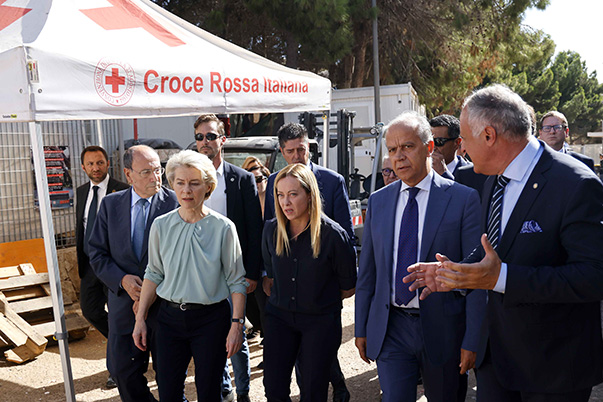
Tackling irregular migration
Fighting migrant smuggling
The fight against and the prevention of migrant smuggling and trafficking in human beings are two of the EU’s priorities, and they are crucial to addressing irregular migration in a comprehensive way. Migrant-smuggling networks know how to exploit legal loopholes and are using new methods of recruitment, such as social media and mobile applications. This development, known as digital smuggling, is a new challenge for law enforcement and judicial authorities. Migrant smuggling and trafficking in human beings are often interlinked: smuggling networks can exploit migrants along the routes or smuggle them for the purpose of being exploited once in Europe.
Operational task forces supported by the European Union Agency for Law Enforcement Cooperation - open a new tab. and joint investigation teams under the European Union Agency for Criminal Justice Cooperation - open a new tab. are reinforcing efforts to tackle migrant-smuggling networks. An operational task force was created, for example, as part of the follow-up by Italy to the 10-point plan for Lampedusa. The European Union Agency for Law Enforcement Training - open a new tab. is also contributing to efforts to combat criminal organisations.
In line with the 2021–2025 EU Action Plan against Migrant Smuggling - open a new tab., an Anti-Smuggling Operational Partnership was launched with Tunisia, building on partnerships concluded in 2022 with Morocco, Niger and the Western Balkans.
The use of commercial means of transport, mainly by air, to facilitate irregular migration to the EU has gradually emerged as a new modus operandi of smuggling networks. To address this, in June the Commission adopted a toolbox - open a new tab. of measures to support Member States, including through targeted outreach to transport operators.
In November, the Commission proposed an update - open a new tab. to the EU’s 20-year-old legislative framework to counter migrant smuggling. This included a proposal laying down minimum rules - open a new tab. to prevent and counter the facilitation of unauthorised entry, transit and stay in the EU, with tougher penalties for smugglers. New rules would reinforce the role of EU agencies, in particular the European Union Agency for Law Enforcement Cooperation, and intensify cooperation with partner countries to tackle the issue globally. The EU also launched a Call to Action for a Global Alliance to Counter Migrant Smuggling - PDF file, open a new tab..

90 % of irregular migrants are brought in by smugglers.

15 000 smugglers were reported by Europol in 2022.

There were 331 000 irregular entries at the EU’s external borders in 2022.
Emerging challenges
A coordinated visa policy is part of efficient migration management. The EU has visa-free arrangements with more than 60 countries, bringing many benefits to citizens on both sides, and also to Member States and partner countries. However, visa-free travel also presents migratory and security challenges - open a new tab.. For example, insufficient alignment with EU visa policy can turn a visa-free country into a transit hub for irregular entry into the EU. Additionally, investor citizenship schemes operated by visa-free countries outside the EU pose security risks.
In response, the Commission has proposed a revision - open a new tab. of the current Visa Suspension Mechanism - open a new tab.. The proposal introduces new grounds to suspend visa-free regimes, more flexible thresholds to trigger the mechanism and provisions to strengthen monitoring and reporting obligations.
In October, the Commission also presented the sixth report - open a new tab. to the Parliament under the Visa Suspension Mechanism. The report covers developments in the visa-free countries in the Western Balkans and the Eastern Partnership. It also focuses on countries in the Pacific and Caribbean that run investor citizenship schemes.
Strengthening border management
The first-ever European Border Management Strategy - open a new tab. was presented in March. It provides a coordinated framework for national authorities and for the more than 120 000 national border authority and European Border and Coast Guard Agency - open a new tab. employees who work together to protect the EU’s borders. The shared vision follows an extensive period of consultation between the institutions. The strategy also reduces dependency on critical technologies from non-EU countries by exploiting the results of EU research and innovation on border management.
The Commission took further steps in building the common EU system for managing the return of irregular migrants, including through a Recommendation on Mutual Recognition of Return Decisions and Expediting Returns - open a new tab.. The EU’s Return Coordinator - open a new tab., supported by representatives of the Member States and the European Border and Coast Guard Agency, finalised the operational strategy guiding the work of the High-Level Network for Returns and began its implementation. The Commission is already working together with Member States on targeted return actions. The Member States reported an increase of 9 % in return decisions issued to non-EU nationals between January and September 2023, compared to the same period the year before.
Safe and legal pathways to Europe
Labour and skill shortages persist across the EU in a range of sectors and at various skill levels. The EU’s drive to fill shortages starts at home, by tapping the potential of the EU’s domestic workforce. However, to fully address this challenge and the impacts of demographic change, the EU also needs to do more to attract skills and talent from all around the world.
The implementation of the skills and talent package - open a new tab. adopted in April 2022 is helping to make the EU’s labour market more attractive to talent from abroad. The measures included legislative proposals to simplify application procedures for and enhance the rights of non-EU nationals who want to work in the EU. Negotiations are progressing well, with a political agreement between the Parliament and the Council reached in December 2023 on the revision of the Single Permit Directive - open a new tab., and an agreement on an update to the Long-Term Residents Directive - open a new tab. expected before the end of the current Commission’s mandate.
In November, the Commission presented a talent mobility package - open a new tab. with additional measures on talent attraction. In particular, it proposed the creation of an EU Talent Pool, the first EU-wide platform for matching non-EU citizens wanting to come and work in the EU with employers in the Member States. The package also includes measures on recognising the qualifications of non-EU nationals and facilitating learning mobility. The EU is also developing talent partnerships with key partner countries to establish mutually beneficial cooperation on mobility and skills development. (See also Chapter 5.)

The Schengen area
In the first enlargement of the Schengen area - open a new tab. in over a decade, Croatia became the 27th country to join the border-free travel space on 1 January 2023. In addition to 23 Member States, Iceland, Liechtenstein, Norway and Switzerland are also Schengen members. In December, the Council unanimously decided - open a new tab. to welcome Bulgaria and Romania into the Schengen area, starting with lifting controls at air and sea borders as of the end of March 2024. Their accession will boost travel, trade and tourism, and will further consolidate the Single Market. Discussions on a further decision to lift controls at land borders will continue in 2024. An enlarged Schengen area will make the EU stronger as a Union, as set out in the ‘State of Schengen Report 2023 - open a new tab.’.
A renewed Schengen Information System - open a new tab. entered into operation in 2023. It provides Member States with additional possibilities to support cross-border cooperation and information exchange within the Schengen area. After intensive preparations by the Cypriot authorities to ensure their readiness to process Schengen Information System data, Cyprus joined the system in July.
Today, visa procedures for the Schengen area still rely heavily on paperwork, leading to higher costs for both travellers and the participating states. In 2023, the EU adopted new rules - open a new tab. allowing for the digitalisation of the procedures, a key deliverable under the Schengen Strategy - open a new tab. presented by the Commission in June 2021.

80 % of people in the EU think it is important to improve border security.

77 % would like to see accelerated border procedures.

68 % are in favour of digital travel documents and 72 % agree that the voluntary use of digital travel credentials will accelerate travel procedures.
Source: Special Eurobarometer 536 - open a new tab., September 2023.
Protecting passengers’ rights
New EU rules for rail passenger protection - open a new tab. took effect in June. Rail passengers are now better protected if their travel is disrupted, and railway companies must ensure a trouble-free travel experience for passengers with reduced mobility. The obligation for rail companies to share real-time traffic and travel data also paves the way for more-competitive ticket offers.
The Commission also proposed to further strengthen existing passenger rights - open a new tab. in relation to all modes of transport. The proposal focuses on improving the enforcement of passenger rights (both general enforcement and individual redress), the rights of passengers using multiple modes of transport and reimbursement for air tickets bought via intermediaries.
Better health
Europe’s Beating Cancer Plan
Europe’s Beating Cancer Plan - open a new tab. is the EU’s most comprehensive ever initiative on tackling cancer, the number one cause of death among EU residents under 65, with a budget of €4 billion to support action.
Since its launch in 2021, the EU has already delivered on several of the plan’s flagship initiatives. From a new Knowledge Centre on Cancer - open a new tab. and the first-ever European Cancer Inequalities Registry - open a new tab. to the launch of a European Network of Youth Cancer Survivors - open a new tab. and new measures - open a new tab. on early detection - open a new tab., the EU is working to change the realities of cancer for patients and their families.

In 2023, the EU continued to deliver. The European Cancer Imaging Initiative - open a new tab., launched in January, aims to facilitate access to and the use of medical images and digital technologies (such as artificial intelligence) to better detect and address cancer. In September, the initiative reached its first major milestone with the launch - open a new tab. of the Cancer Image Europe platform - open a new tab.. This links up 36 datasets of images of nine cancer types (breast, colon, lung, prostate, rectum, liver, diffuse intrinsic pontine glioma, neuroblastoma and glioblastoma), bringing together more than 200 000 image series involving about 20 000 individuals.
The European Cancer Imaging Initiative will:

capitalise on the recent advances by and successes of artificial intelligence systems in helping medical professionals detect and diagnose cancers

support the piloting and development of innovative computer-aided solutions to achieve greater accuracy and reliability in cancer imaging and personalised care, in line with the objectives of Europe’s Beating Cancer Plan

showcase how medical images can be accessed, used and pooled while ensuring a high level of ethics, trust, security and personal data protection, in full compliance with EU values and rules
The first set of Country Cancer Profiles - open a new tab. for the Member States, Iceland and Norway shows - open a new tab. that they spend a substantial amount on cancer care (nearly €170 billion in 2018). Lung cancer remains by far the most common cause of death from cancer, and large inequalities remain in cancer mortality rates both between and within countries.

Cancer is the second leading cause of death in the EU, accounting for 26 % of all deaths - open a new tab..

Cancer mortality is almost 75 % higher among men in the EU.
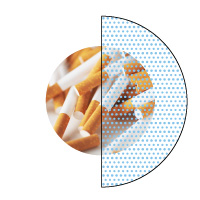
50 % more people - open a new tab. from lower-income groups than from higher-income groups smoke every day.
Participation in cervical cancer screening varies by almost a factor of two - open a new tab. depending on the level of education.

Due to COVID-19, cancer screening in most Member States dropped in 2020 compared to 2019.
In 2018, the Member States, Iceland and Norway spent nearly €170 billion on cancer care.
Images © Adobe Stock
The Commission has launched a series of dialogues with young cancer survivors to better understand their needs and challenges, and to develop with them initiatives that will help address these points.
Work started in April on developing the first EU-level code of conduct on fair access to financial services for cancer survivors. This aims to advance the right to be forgotten and to address discrimination, so that people with a history of cancer receive fair treatment when accessing financial products such as mortgages or life insurance.
As many as 78 % of occupational cancers recognised in the Member States are related to asbestos.
(See Chapter 6 for EU measures aiming to lower occupational exposure to asbestos.)
The EU is working towards:
40 % of cancer cases are preventable.

1.a tobacco-free generation;
2.reducing harmful alcohol consumption;
3.reducing environmental pollution;
4.reducing exposure to carcinogenic substances and radiation;
5.improving health knowledge and literacy;
6.promoting healthier lifestyles.
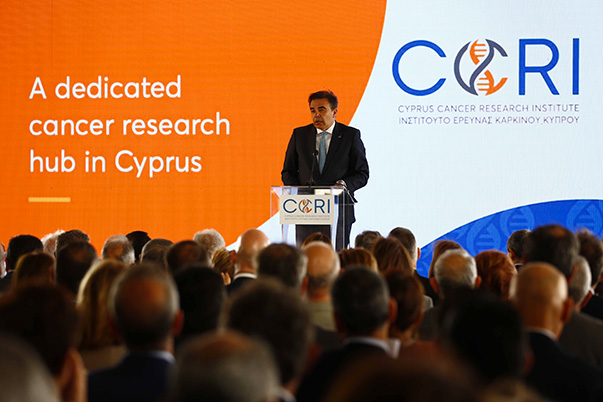
Health security and COVID-19
After more than 3 years, on 5 May 2023 the World Health Organization announced that COVID-19 no longer constituted a global health emergency. Determined action and cooperation at the global, EU and Member-State levels, and significant investment in science and innovation, enabled the EU to overcome this unprecedented crisis - open a new tab..
However, while its status may have changed, COVID-19 has not disappeared, and the EU is remaining vigilant. The European Centre for Disease Prevention and Control - open a new tab. is monitoring the evolving situation closely. In autumn, it published an update - open a new tab. on the increased transmission of COVID-19 in the EU and the European Economic Area, along with guidance on vaccination and communication campaigns for Member States. A new surveillance tool - open a new tab. was launched by the centre and the World Health Organization in October to monitor the combined impact of respiratory diseases and improve the early detection and communication of signs of respiratory virus circulation.
In response to the COVID-19 pandemic, the Commission set up the European health union - open a new tab. to improve and safeguard the health of everyone in the EU. Based on the lessons learned from the pandemic, the new framework - open a new tab. strengthens the EU architecture for the prevention of, preparedness for and response to serious cross-border health threats - open a new tab.. It also extends the role of two key EU agencies through the new mandates for the European Centre for Disease Prevention and Control - open a new tab. and the European Medicines Agency - open a new tab..
The Commission’s Health Emergency Preparedness and Response Authority - open a new tab. (HERA) plays a crucial role in ensuring the EU has the medicines and equipment needed to protect its citizens when emergencies strike. The Commission, on behalf of the Member States, secured an agreement with BioNTech-Pfizer - open a new tab. in May to better adapt vaccine deliveries to Member States’ needs and ensure the availability of adapted COVID-19 vaccines should new variants emerge. A framework contract was also signed with leading vaccine producers, establishing the EU FAB network - open a new tab. to ensure continuous capacity to produce vaccines in the case of a future public health emergency. HERA Invest - open a new tab., launched in 2023, will support research and development for the most pressing cross-border health threats. HERA is also working with Member States to improve knowledge and skills in health preparedness and response, particularly in key areas such as stockpiling and procurement.
Efforts continue on strengthening Europe’s pandemic preparedness and readiness for EU-wide clinical trials, in order to provide timely access to novel treatments and vaccines. The EU is a strong supporter of the Pandemic Fund - open a new tab., hosted by the World Bank. The fund supports the prevention of, preparedness for and response to pandemics in low- and middle-income countries, with the EU, its Member States and financial institutions, acting together as Team Europe - open a new tab., being major contributors.
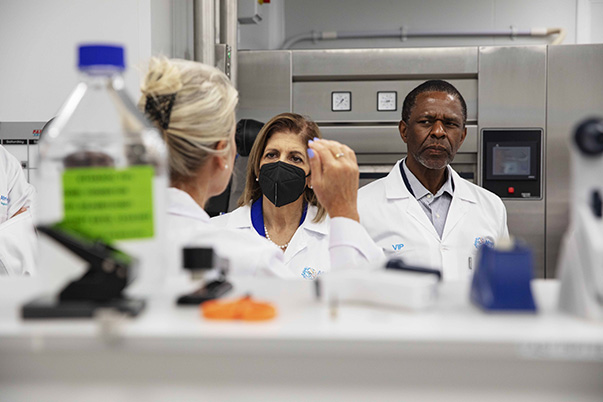

The EU Digital COVID Certificate – a European success story
The pandemic has shown how digital health can transform healthcare systems and deliver better healthcare.
The EU Digital COVID Certificate - open a new tab. was a crucial element in the response to the pandemic, making it easier for people to move safely around the EU during the crisis. It quickly became the global standard, with almost 80 countries connected to the system and more than 2.3 billion certificates issued. The EU Digital COVID Certificate Regulation expired on 30 June 2023.
Building on its success, and based on its technology, on 1 July 2023 the World Health Organization launched the Global Digital Health Certification Network - open a new tab.. The system will strengthen the global health architecture and help protect people across the world from ongoing and future health threats, including pandemics.
Overhauling the EU’s medicine systems
The proposed reform of the EU’s pharmaceutical legislation - open a new tab. – the largest and most far-reaching in 20 years – aims to ensure this crucial sector is better adapted to 21st century needs.
Presented in April, the reform addresses several fundamental challenges. For example, medicines are still not reaching patients quickly enough and are not always equally available in Member States. High prices for innovative treatments and shortages of medicines are also significant concerns for patients and healthcare providers.
A central objective of the reform is to create a single market for medicines, ensuring all patients across the EU have timely and equitable access to safe, effective and affordable medicines. The revision will also support innovation in medicine development and boost the EU’s competitiveness through a future-proof, crisis-resistant and simplified pharmaceutical system. This means new and better treatments could become available faster, helping patients get the care they need sooner.
The reform includes a set of measures to tackle the issue of medicine shortages in the long term, and outside of crisis situations. As part of this goal, in October the Commission presented - open a new tab. a set of measures with a particular focus on the most critical medicines, for which security of supply in the EU must be ensured at all times. A European Voluntary Solidarity Mechanism - open a new tab. for medicines, which enables Member States to redistribute medicines from their available stocks in the case of critical shortages elsewhere in the EU, was also launched. A range of new rules and incentives for pharmaceutical companies will be proposed as part of the reform, along with simplified regulatory procedures and stronger environmental considerations during medicine production.
Antimicrobial resistance - open a new tab. is considered one of the top-three health threats in the EU. It happens when bacteria become resistant to the medicines used to fight infections. The reform includes prudent-use measures and a new incentive for game-changing antimicrobials. A recommendation proposed by the Commission, including EU and national targets on the consumption of antimicrobials, was swiftly adopted - open a new tab. by the Council as part of the EU toolkit on antimicrobial resistance.
Antimicrobial resistance

The graphic shows the challenge of antimicrobial resistance (AMR). It states that the number of deaths annually in the EU due to AMR currently stands at 35,000 while the number of deaths worldwide each year is 1.2 million, and that AMR could result in 10 million deaths worldwide per year by 2050 if no action is taken. It also emphasises the EU’s goal of reducing antibiotic consumption by 20% by 2030 to combat this problem.
Tackling mental health
The EU has been confronted by unprecedented crises that have significantly affected people’s ability to cope with growing challenges in fast-changing contexts. To tackle this, in June the Commission presented a comprehensive approach to mental health - open a new tab., which seeks, among other aims, to help vulnerable groups, especially young people, and to break the stigma and discrimination surrounding mental health. It is an important first step in putting mental health on an even footing with physical health. The new approach introduces 20 flagship initiatives and identifies €1.2 billion in funding opportunities from various financial programmes to support Member States in putting people and their mental health first.
Measures to tackle mental health issues across policies

European Code for Mental Health

Healthier Together initiative for non-communicable diseases

European depression and suicide prevention initiative

Safer digital spaces for children and young people

Proper application of EU rules on safety and health at work
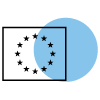
European Agency for Safety and Health at Work workplace campaigns
To mark World Mental Health Day on 10 October 2023, the Commission held a high-level conference in Brussels. The event brought together hundreds of people, including representatives of the EU institutions, national governments, international organisations and other interested partners.
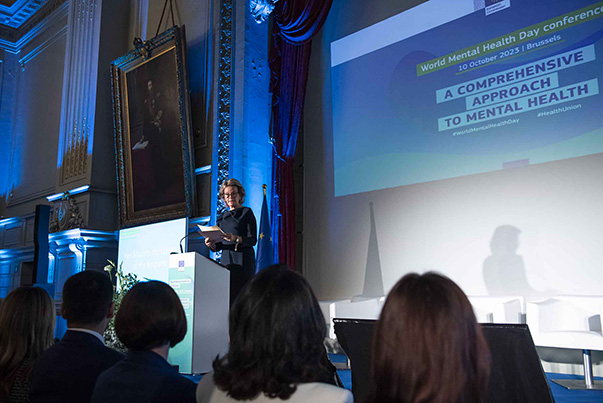
Unleashing the potential of EU funds in the health sector
The Commission’s Technical Support Instrument is helping Belgium, Austria and Slovenia make the best use of available EU funding programmes to develop their healthcare sectors. Through the health hub - open a new tab., these Member States can identify the best funding opportunities to support key reforms for the benefit of citizens. In the long run, this will also help national and regional governments to underpin economic investment in the health sector. Building on its promising results, this project can be scaled up to the EU level.
The Global Health Strategy
The EU’s leading role in fighting the COVID-19 pandemic has shown that it can make a major contribution to global health objectives through a Team Europe approach. This combines resources from the EU, its Member States and its financial institutions to deliver a greater impact on the ground.
In November 2022, the Commission presented a Global Health Strategy - open a new tab., the external dimension of the European health union and a key component of its Global Gateway - open a new tab. strategy (see Chapter 8). This reaffirms the commitment to the Sustainable Development Goals (in particular goal number 3 on good health and well-being) and the European Consensus on Development - open a new tab., which sets out common objectives and principles for development.
A joint action coordinated by France was launched in November 2023, involving 22 Member States, Norway and Ukraine, mapping all global health strategies. This will help to coordinate actions and avoid overlaps.
